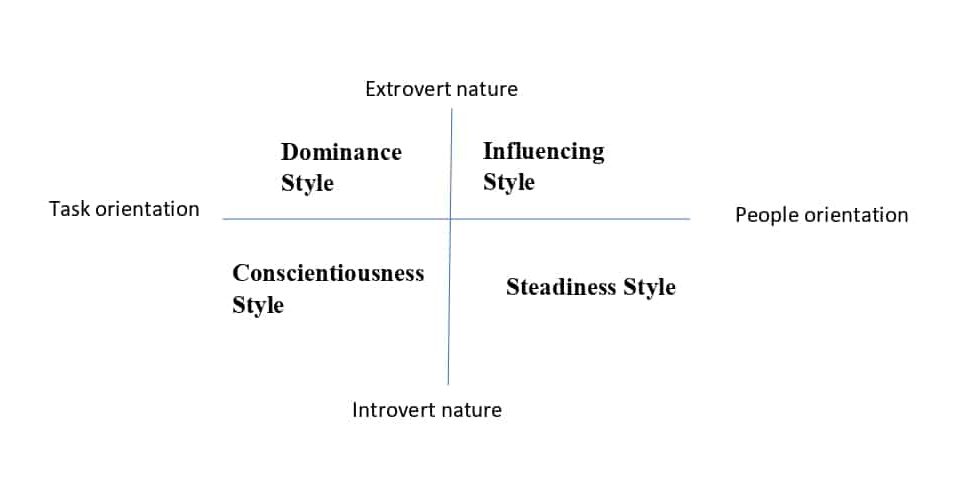The Road to Building Successful Personal & Professional Relationships
We often complain about our relationships, at times we are upset because someone close to us, said something that is not acceptable or we may be upset with our own behaviour at times. In short, our relationship with others is largely dependent upon our and their behaviour. Study of human behaviour is one of the most complex sciences.
It is an inexact science; because it is almost impossible to predict human behaviour. However, an attempt can be made to analyse and understand the reasons for a particular behaviour shown by people and how one can understand the behaviour depicted by others.
In doing so, one is able to comprehend the emotions and reactions displayed by the other person and accordingly we can respond or react in a given situation. This will not only help to handle some extreme outburst situations but can also be helpful in avoiding or at times resolving relationship conflicts.
Why is it important to study human behaviour and what fields contribute to its study?
Study of human behaviour comes under the ambit of psychology, this is something that is known to all, but apart from this field of study, there are some other fields too that contribute to an understanding of human behaviour.
Fields such as social psychology, anthropology, sociology, social psychology and communication, all have a lot to contribute in understanding the factors that influence or shape the human behaviour.
The human behaviour is basically shaped by three primary factors: the genes, the environment and the social class. While the genetic make-up of an individual determines the intention, motivation and drive that takes an individual through various aspects of life.
The environment of an individual determines his/her ultimate goal, objective and passion in life. The social class determines the verbal and non-verbal behavioural aspects along with his take and stake towards people and society at large. While genetic level modifications can not be done for behaviour modifications (although genetic engineering may come up with some technology to achieve this, in distant future, as of now, this is only a remote possibility), behavioural response strategies can be learnt and implemented to modify our regular behaviour.
Organizations often incorporate a complete list of work behaviours expected from an employee during his work tenure. In fact, HR in most organizations organize a special behavioural skills training. Even schools and colleges have not started orienting their students with the right set of behavioural skills for students.
There are various behavioural skills training programs (I am also doing many such sessions for B-Schools and corporates), that give us an idea about our own behaviour and how we can modify or adapt our behaviour to suit a particular situation, professional or social environment.
What are the 4 types of behaviour?
Behaviour is too wide a term to be put into some categories. There is a complete continuum of behaviour and behavioural responses depicted by human beings in different situations. However, research indicates that overall, the human behaviour/behavioural styles can be categorized into four major categories.
These four styles are collectively known as DISC. Where ‘D’ stands for Dominant style, ‘I’ stands for Influencing style, ‘S’ stands for Steadily style and ‘C’ stands for Conscientious style. In this article, I have highlighted certain characteristics of these four styles.
You can go through them and decide, which is your behavioural style. A word of caution! No one particular style is the best. All styles are inherent and the only step an individual can take is to improvise his/her existing style.
If you try to adopt a style that is extremely opposite to your current style, you can easily end up in creating a negative image of yours. Let us understand these styles in detail:

Dominance Style- Believes in getting results
1. Dominance Style – people having dominant style of behaviour get charged by achieving challenging results. They are quick decision makers and are initiators for any task. They like to be in-charge and hate to be controlled. They believe in the results and are ready to experiment with new ways and methods that are likely to bring results. They look for authority, power, freedom, opportunity, prestige and challenge.
2. Influencing Style – people having influencing style of behaviour get charged by being with others. They practically thrive on their relationships and always prefer to work in groups, they enjoy interacting and influencing others. They get enjoy contacting people and when in-charge of a group, they make the group environment very conducive. They look for recognition, freedom of expression, freedom from control and opportunity to counsel and coach other team members.

Influencing style- believes in getting results through collective efforts

Steadiness Style- believe in restricting to themselves but are always supportive to their team
3. Steadiness Style – people having steadily style of behaviour get charged with regulated, discipline and regular routine environment. They prefer status-quo then ever- changing environment. These people are not only very patient but are also very loyal. They have an excellent ability to control people during an outrage and have a genuine interest to help people and be of service to them. They look for an environment that provides quality of life, minimum conflicts, sincere appreciation from others, security and predictability.
4. Conscientiousness Style – people having conscientious style get charged when they get a food for thought. They prefer to go into the depth of the matter at hand, before taking any decision.
They are very good at fault finding and often point of even minutest of details that others often ignore. They don’t like change, unless it is sure- shot to bring qualitative improvements.
They are very systematic and critical thinkers. They look for an environment that provides access to latest, in-depth, up-to-date information, offer scope of quality and its further improvement and ensures accuracy.

Conscientiousness style- believe in being self – motivated and remain task oriented qualitatively.

‘DICS’ behavioural styles, People with dominance style are extrovert and task oriented in nature, people with influencing style are extrovert but people oriented in nature. The people with conscientiousness style are task oriented but are introvert in nature whereas people with steadiness style are introvert but still have orientation towards people.
How to leverage your style and adapt to other’s behavioural style?
If you have come so far, reading this article, then by now you must be aware of your own behavioural style. Some of you must be wondering that ‘I seem to have characteristics of all styles’, so what exactly is my style, I am not sure. Yes, you are correct, it is very difficult to delineate a single specific behavioural style for most of us. But your true style is the one that you depict during the difficult or strenuous conditions. Let us see, what are some examples of Behaviour?
Try, to recall how you behaved when you were cornered by your father or your boss or even your spouse, if an act of misdeed. What was your behavioural response at that time? Were you quiet and listened with your head down, then your style is Steadiness behavioural Style?
If you were quiet but your mind was working out ways to explain your part to the other person then surely you are the Conscientiousness Style. However, if your head was down but your facial expression were grim and you were worried about the way this other person will perceive about you, then you are bound to be having Influencing Style.
But if despite of the show-sown, you kept your head held high and wanted eagerly to counter the other person, then you are having a Dominance type of behavioural style.
What is more important to understand over here is that how we keep a check on our behavioural style and how we use it for our benefit. Also, it is important to understand the other person’s behavioural style and adapt our style accordingly. Now, the question arises how do we do that? Read on and you will come to know.
Emotional Intelligence blended with effective communication-is the art of successful relationship management
Our behavioural strength comes from our personal and social behavioural skills. The two important aspects of your personality that people remember are your communication and behaviour. An effective communicator leaves a strong impact in the mind of people whom he/she meets (do read my blog on ‘Effective Communication Skills– the ultimate key to success for all’). Effective communication is often perceived as the mantra for successful relationships, however very few people know that for an individual to be a good orator, one has to develop the art of emotional intelligence.
The ability of an individual to perceive the stimuli coming from the outside environment and analysing and interpreting it before generating any kind of emotional response or communication, is called Emotional Intelligence (EI). According to Joshua Freedman, a specialist on concept of EI, our ability to express our EI through effective communication contributes to 80% of our success. Emotional Intelligence is an ability that one can easily acquire. According to Dr. Sandeep Atre, there are three aspects of EI; Awareness, Attunement and Adaptability.
Awareness involves looking for the cues from the body language of others and controlling one’s response before the verbal outburst starts.
Attunement involves interpreting them with cognitive and emotional empathy.
Adaptability involves changing one’s response communication and behaviour accordingly, so as to achieve interpersonal synchrony.
Emotions are expressed through non-verbal communication i.e. body language and facial expressions. This is so because our emotions are controlled by the our evolutionarily older brain-parts limbic system and brainstem- which are much more emotional, reactive and unregulated. Thus, when an argument is in its initial phases, an emotionally intelligent person can manoeuvre the conversation in the right direction by getting cues about the state of emotions of the other person and chose an appropriate style of communication to avoid conflict and spoiling of relationships.
So, whenever you find yourself or some other person showing signs of flaring up anger or a heated discussion about to begin, just take a pause, a single deep breadth and apply this technique of ACTS, i.e. Aware, Control, Talk, Solve.
Become aware about the state of emotion you or the other person is experiencing, take a control over your body language and tongue, talk through as assertive style of communication and solve the issue without making it result into a conflict. By doing so you will show social intelligence through effective communication, stemming through sound emotional intelligence.
The way you connect and interact with people who are important to you, determines your future success. If you really wish to excel in life, it is really very important to work upon behaviour and adopt a style suitable to the situation.
The most important thing to remember while modifying your style in order to deal with people, is to approach them in a way they would approach you. That means be like them. So, while dealing with an individual who has ‘Influencing style’ then use humour, be personal and friendly, avoid giving details and don’t ever be authoritative with them.
Similarly, if you have to get work done from an individual with ‘Dominance style’, then just tell them what you expect from them, don’t give them directions, don’t give them explanation, give them bottom line and you will get results without having to push for it.
While dealing with, people having ‘Conscientiousness Style’, give them complete details along with complete facts and figures, make sure you answer all their queries, if you want them to timely work, up to your satisfaction.
While dealing with people having, ‘Steadiness Style’, it is important that you initiate the deliberation and give them step by step guidelines in advance and keep a follow up with them from time to time. A word of caution with such people is, that don’t make much changes in the process or project, else these people get upset and may out leash their anger on to you.
In this article I have given you a brief about behaviour and behaviour styles. It is almost impossible to discuss everything about this wide topic, in just one article. Keep checking for more content and knowledge regarding communication and behavioural skills and how you can use these skills to improve and enhance your image among people.
Keep Learning! Keep growing!





